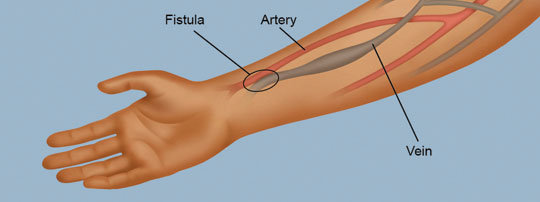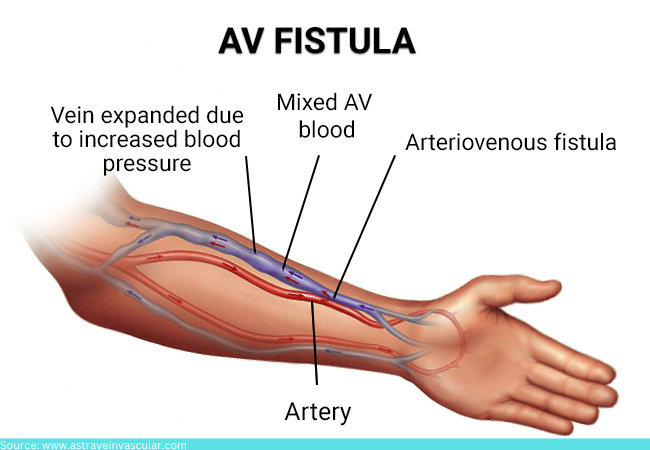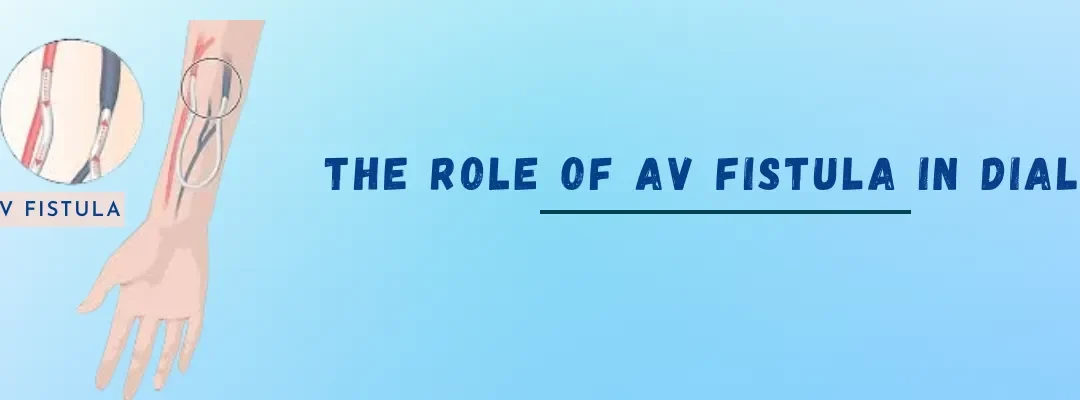People with impaired renal function frequently receive dialysis as a treatment. In people with ESRD (end-stage renal disease) or ESKD (end-stage kidney disease), a dialysis machine takes over the job of their failing kidneys by filtering toxins from their blood. A patient must undergo a surgical procedure to make an access site for the machine before starting dialysis.
This surgery is generally performed in the wrist or arm by joining an artery and a vein. A Microvascular surgeon specializing in treating the vascular (circulatory) system performs the treatment.
Dialysis should be explored once end-stage renal illness has been diagnosed, advises Dr. Leena Jain, a renowned plastic surgeon in Bandra, Mumbai. She adds that an arteriovenous fistula, commonly known as an AV fistula, is the best and most durable type of dialysis access.

Read on to learn more about AV fistula.
Understanding the importance of AV fistula
The selected artery and vein are joined and an AV (arteriovenous) fistula is created to provide dialysis access. The entry point must be strong enough to bear weekly dialysis sessions without buckling.
An AV fistula is usually created in the forearm but sometimes in the arm; however, depending on size of veins available. When there is an AV fistula, blood flows straight from the artery into the vein, which raises the blood pressure and increases the flow of blood through the vein. The veins widen as a result of the higher flow and pressure. The larger veins thus become able to produce enough blood flow to support a sufficient hemodialysis therapy.
AV fistulas endure longer than any other type of dialysis access, are less likely to become infected or clot, and provide consistent results. These qualities make AV fistulas the ideal vascular access for long-term dialysis.
Dr. Leena Jain, a highly-skilled plastic surgeon in Bandra, Mumbai, and her well-trained team, ensures that they use the best surgical procedures for AV fistula creation.
Currently, her focus is on radial cephalic fistula and brachiocephalic fistula to develop. It is accomplished when the surgeon joins the radial artery with the cephalic vein in the wrist of the patient. There are further surgical variations as well, typically made in the forearm of the patient.
If you choose to have this treatment, the surgeon will consult with you to determine which choice is best for you.
How is the AV fistula utilized in dialysis?

Once created, the fistula is ready for use after about 6-8 weeks. An AV fistula provides access for dialysis procedure. Your nurse will begin your dialysis procedure with the insertion of 2 needles into the AV (arteriovenous) fistula.
Blood is drawn using a single needle and sent to a machine, where it goes through the filtration process. The blood can then be safely injected back into the body using the second needle.
The eminent plastic surgeon Dr. Leena Jain explains that patients typically need 2- 3 dialysis sessions each week, each lasting 3 – 4 hours.
What are the advantages of AV fistula?
The main advantages of AV fistula include:
- It keeps working longer than alternative vascular access methods
- There is no synthetic material inserted into your body
- It enables adequate blood flow required for efficient dialysis, which helps reduce the treatment time
- There is little chance of infection
- The chances of clotting are fewer than in alternative dialysis entry methods
- It is created during an outpatient procedure with the help of a local anesthetic
- The recovery is faster, as is the resumption of your everyday activities
Due to the mentioned advantages, Dr. Leena Jain explains that healthcare professionals recommend an AV fistula over any other access type.
What does AV fistula surgery involve?
The first step your doctor will take in forming an AV fistula is to examine your blood vessels (veins, capillaries, arteries, etc.) to ensure they are strong enough and capable of supporting a fistula. A radiologist will evaluate width and depth of your blood vessels using non-invasive or minimally invasive procedures like ultrasonography Doppler of upper limbs.
These tests will determine if your blood vessels can sustain an AV fistula. “Vessel mapping” is a common term used to describe these tests. If the results show you to be a candidate for an AV fistula, then you will be given an appointment to have an AV fistula created.
The surgery is done using local anesthetic injection to the selected access location in order to create an AV fistula. Your doctor will then make a small incision to gain access to the chosen arteries and veins and make a surgical connection between the selected artery and vein using sutures. Sutures are then applied to close the skin and a dressing placed.
This connection enables blood to stream from the artery into the vein, and this increase in blood flow causes the veins to enlarge, and their walls also become thicker.
It will take 6-8 weeks after the AV fistula has been made before it becomes sturdy and strong enough to undergo the ordeal of dialysis treatments. The accomplished plastic surgeon Dr. Leena Jain explains that this is why AV fistula surgery is conducted about 6 months before your first dialysis session ideally.
Conclusion
An AV fistula is an ideal technique for vascular access in long-term dialysis. Compared to alternative access techniques, such as AV grafts and venous catheters, it typically lasts longer with fewer risks and problems. People who require long-term dialysis may find more comfort and a higher quality of life after AV fistula surgery.
If you or a loved one has to undergo dialysis and requires an AV fistula, please do not hesitate to contact Dr. Leena Jain. With over 9 years of expertise in plastic surgery and reconstructive microsurgery, Dr. Jain is dedicated to providing safe, reliable, and effective treatments to her patients.

